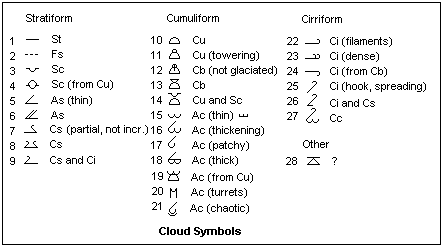After a blistering Friday afternoon, I dreaded the hot commute back home, but finally we got some relief in the form of afternoon thunderstorms. There were a few around with cool outflows, but limited areas of rain. Still, the thunderstorms do have another blessing: when they rain out, the Cirrus Spissatus helps keep the sky overcast for the rest of the evening. Specifically generated from Cumulonimbus Capillatus (CL9)(Your typical thunderstorm), this is called Cirrus Spissatus Cumulonimbogenitus (CH3). The downside, is that the cirrus also limits the diurnal heating necessary for further thunderstorm development and stabilizes the atmosphere to some extent.
The high clouds of the anvil separate from the mid and lower clouds and leave a nice veil over the sky. Unlike other cirrus, this is a bit darker and thicker in the middle, while more typical of cirrus around the edges.
These that I took, show the transition from CL9 to CH3.















